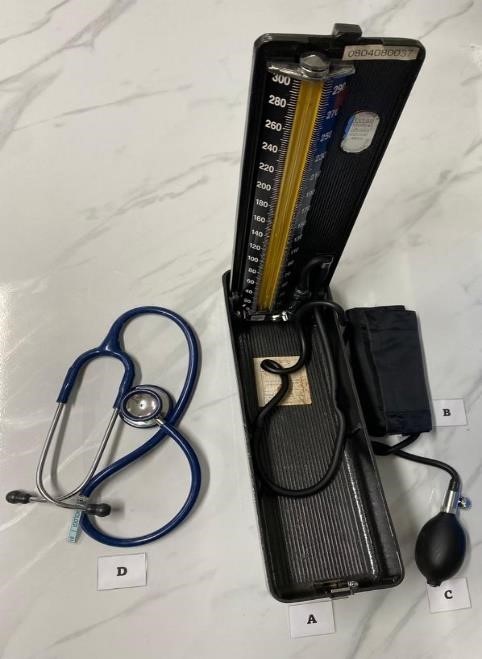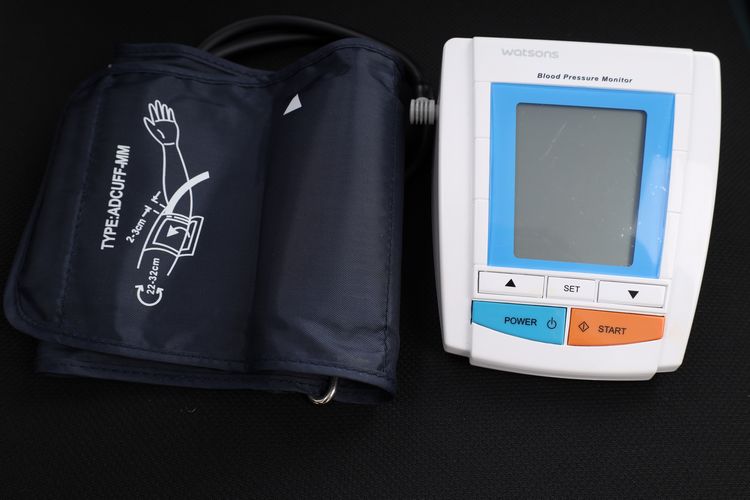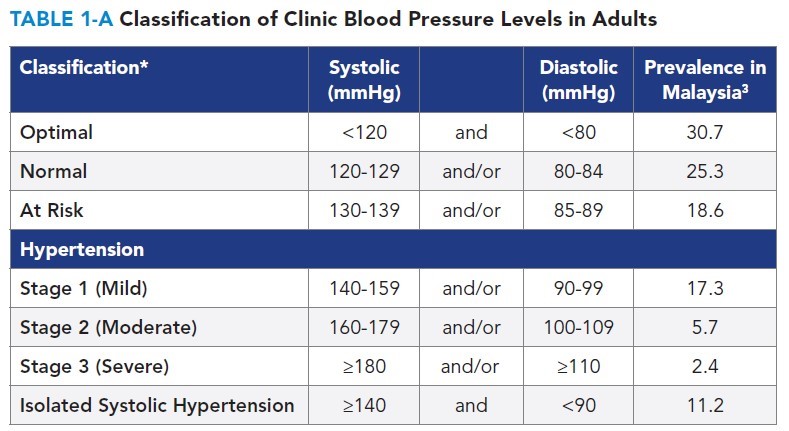MEASURING BLOOD PRESSURE
Arterial blood pressure refers to the pressure in the large systemic arteries. The maximum pressure during ventricular systole is called systolic blood pressure (SBP). The minimum pressure during diastole is called diastolic blood pressure (DBP). It is measured in millimetres of mercury (mmHg)
The blood pressure (BP) is written as BP = SBP/DBP
1. Instruments
Blood pressure can be measured indirectly using a sphygmomanometer, either mercury or aneroid, and electronic devices. There are two types of sphygmomanometer:
i. Manual sphygmomanometer
A: Sphygmomanometer
Sphygmomanometer parts:
B: Pressure cuff
C: Inflation bulb
D: Stethoscope
ii. Electronic or Digital sphygmomanometer – (Label E)
This instrument uses an electronic pressure sensor to measure blood pressure electronically, readings are presented on a digital display.

2. How to measure blood pressure
i. Manual sphygmomanometer
- The subject should be relaxed for at least 15 minutes prior to measurement of blood pressure
- Ensure that the safety valve is on and the mercury level is at zero
- Loosen the air valve cap and squeeze all the air out from the cuff before applying on the arm of the subject
- The bladder of the cuff should encircle about 75% of the arm circumference
- Expose the upper arm adequately and apply the cuff around it
- Ensure that the middle of the bladder cuff overlies the path of the brachial artery
- The lower border of the cuff should be at least 2.5cm above the cubital fossa to allow sufficient space for palpation and auscultation of the brachial artery
- The arm with the cuff and the sphygmomanometer should be at the same level with the heart.
Estimation of SBP using palpation method:
i. Apply the cuff
ii. Palpate the radial pulse in the arm with the cuff
iii. While still palpating the radial pulse, tighten the air valve cap and inflate the cuff bladder by pressing the rubber bulb
iv. Continue to inflate the bladder until the radial pulse disappears. Keep the fingertips over the artery and reduce the cuff pressure gradually (5 mmHg at a time) by loosening the air valve cap
v. Note the pressure in the sphygmomanometer when the radial pulse becomes palpable again. This is the approximate SBP
vi. Release the pressure in the cuff quickly by loosening the air valve cap fully.
Measurement of arterial BP using auscultation method:
i. While the cuff is still applied but deflated, palpate the brachial pulse on the medial side of the anterior part of the elbow
ii. Place the diaphragm of the stethoscope over the brachial pulse
iii. Inflate the cuff rapidly until the pressure is about 30 mmHg above the estimated SBP determined by the palpation method
iv. Reduce the cuff pressure gradually (5 mmHg at a time or 2mmHg per second) by loosening the air valve cap until the first sound is heard. This is the SBP
v. Continue to reduce the pressure until the sounds disappear. This is the DBP.
vi. When the pressure at which the sounds disappear is noted, release the pressure in the cuff quickly by loosening the air valve cap fully.
You can also watch the video from this link:
https://www.youtube.com/watch?v=f6HtqolhKqo
DISCLAIMER: This video is for educational purpose only.
ii. Digital sphygmomanometer

- Turn the power on to start the unit
- Wrap the cuff around the bare arm so that the centre of the bladder is positioned 2-3 cms above the elbow joint on the inside of the arm
- Close the cuff
- If possible lay the arm out with the palm of the hand facing upwards and the cuff at approximately heart level
- On the automatic models, the cuff will inflate by itself with a push of a button
- After the cuff inflates, the automatic device will slowly let air out.
- Look at the display screen to get your blood pressure reading
3. What is normal blood pressure?

Clinical Practice Guideline on Management of Hypertension – 5th Edition (2018)